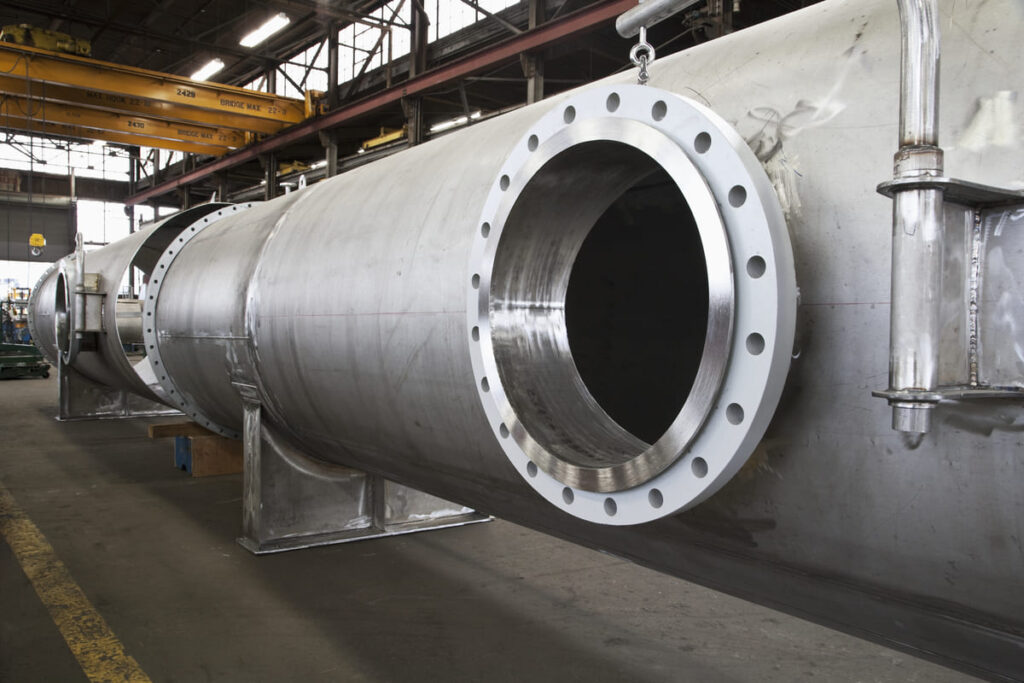At their core, carbon steel pipes are cylindrical tubes designed primarily from an alloy with carbon as its major component. Their unique composition is characterized by carbon combined with iron, making them distinct in strength and flexibility. This melding of elements results in a robust and versatile material serving various applications in various industries.
Not all metals are created equal. Each variant comes with its distinct set of components and benefits. Carbon steel, as the name suggests, prioritizes carbon as its primary alloying constituent. In contrast, other types of steel, such as stainless or alloy steel, integrate different elements into their makeup.
For example, stainless steel incorporates chromium, which gives it a resistance to rust and corrosion. At the same time, alloy steels might contain nickel or molybdenum, each contributing specific attributes. The central role of carbon in carbon steel pipes differentiates them, making them a preferred choice for certain applications that need strength and formability.
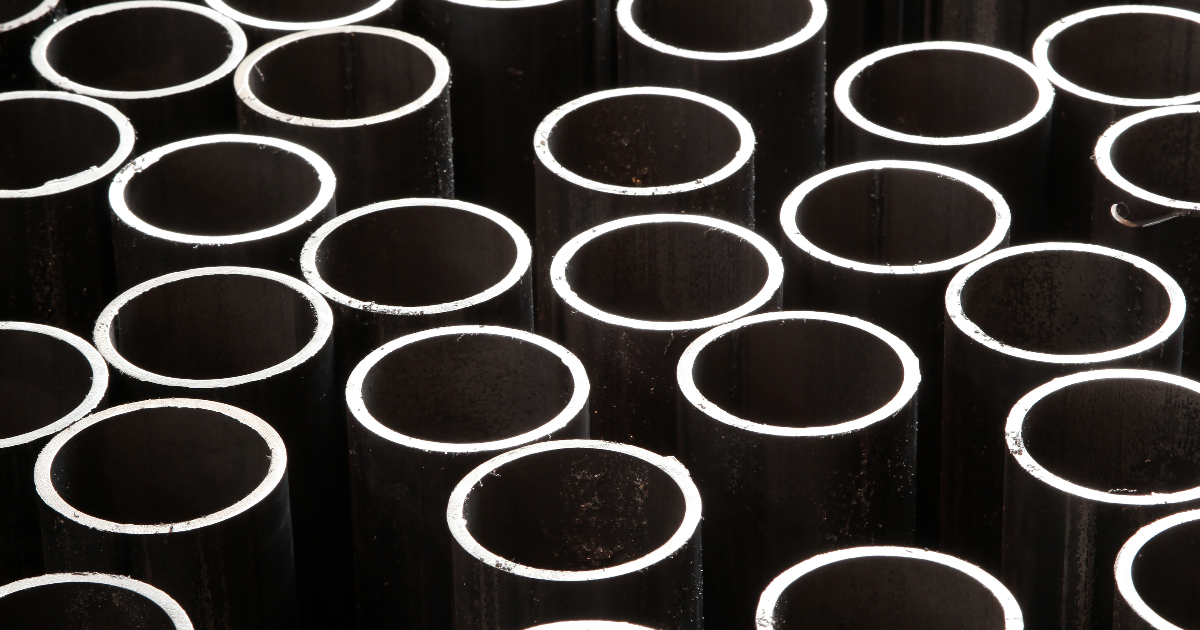
Types of Carbon Steel Pipes
Low Carbon Steel (Mild Steel)
Low-carbon steel, commonly called mild steel, typically contains carbon from 0.05% to 0.30%. Its relatively low carbon content makes it more malleable and ductile than other forms, making it ideal for shaping and welding. Due to its formability and affordability, it’s frequently utilized in automotive body panels, structural frameworks, and some pipelines.
Medium Carbon Steel
Medium carbon steel carries a carbon content that falls between 0.3% to 0.6%. This type offers a balanced combination of strength and flexibility. With greater carbon content than mild steel, it is often employed where strength is required but without sacrificing too much flexibility. Common applications include railway tracks, gears, and shafts.
High Carbon Steel
High-carbon steel has a carbon composition ranging from 0.6% to 1.0%. With increased carbon content comes greater hardness and strength but also less flexibility. This type of steel is often used to produce knives, cutting tools, and high-strength wires.
Very High Carbon Steel
Very high carbon steel contains carbon content from 0.96% to 2.1%. It’s the hardest and strongest of carbon steels but can be brittle. It’s typically used for specific purposes, such as producing chisels and drill bits, where extreme hardness is necessary.
Differences and Distinguishing Features
The primary distinctions among these carbon steel types lie in their carbon content, impacting their hardness, elasticity, and ideal applications. The steel becomes harder and stronger when carbon content increases. Selecting the right type often depends on the specific balance of strength and flexibility needed for a particular task.
Manufacturing Process of Carbon Steel Pipes
Raw Material Sourcing
The initial step in manufacturing carbon steel pipes involves procuring high-quality raw materials. Iron ore, coke, and limestone are the primary ingredients. These are melted in a blast furnace, producing molten iron. This iron, combined with varying amounts of carbon and other alloying elements, determines the type of steel to be produced.
Forming and Shaping Processes
Once the desired steel composition is achieved, the molten steel is cast into billets or slabs. These semi-finished shapes are rolled or extruded to produce the desired pipe size. Two common methods for pipe formation are the Electric Resistance Welded (ERW) method and the Seamless method. ERW pipes are formed by rolling a sheet into a cylinder and welding the seam, while seamless pipes are created by heating a billet and piercing it with a mandrel, followed by elongation and wall reduction processes.
Heat Treatment for Durability and Strength
To enhance the properties of the steel pipe, it undergoes heat treatment processes such as annealing, normalizing, or quenching. These processes involve heating the pipe to specific temperatures and cooling it at controlled rates. This refines the steel’s grain structure, ensuring improved strength, toughness, and flexibility.
Finishing Processes
Once formed and heat-treated, the pipes undergo finishing processes to improve their dimensional accuracy and surface quality. This can include cutting to length, straightening, and surface cleaning to remove any scales or impurities. Some pipes might also receive protective coatings or linings, like zinc or epoxy, to enhance their corrosion resistance and extend their service life.
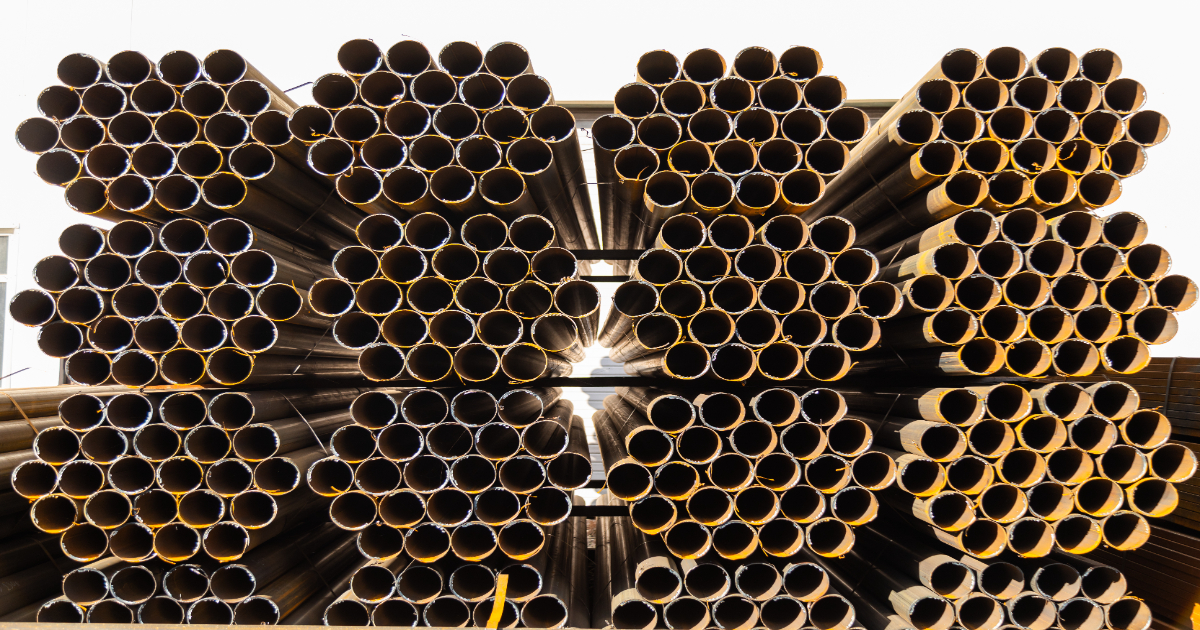
Advantages of Using Carbon Steel Pipes
Durability and Strength
Carbon steel pipes boast an inherent robustness, making them apt for various rigorous applications. Their high tensile strength ensures they can manage significant pressures and loads without deforming, making them a dependable choice for industries that require sturdy piping solutions.
Affordability Compared to Other Materials
Carbon steel pipes often present a more economical option when evaluating the cost. Their production process and abundant raw materials contribute to a competitive price point, especially compared to alternatives like stainless steel or specialty alloys. This cost-efficiency is particularly beneficial for expansive projects or when sourcing materials in bulk.
Ease of Fabrication and Modification
Given its properties, carbon steel offers flexibility in its shaping and adaptation. This material can be easily welded, cut, and molded to fit various specifications and requirements. Such malleability proves advantageous for industries and projects that require customized piping solutions.
Resistance to Wear and Tear
Despite its affordability, carbon steel doesn’t compromise on longevity. These pipes resist the typical wear and tear seen in industrial and infrastructural applications, ensuring a longer operational life and reducing the frequency of maintenance or replacements. Whether it’s the movement of particulate-heavy fluids or exposure to high traffic conditions, carbon steel pipes prove their mettle by standing resilient.
Common Uses and Applications of Carbon Steel Pipes
Oil and Gas Transportation
Carbon steel pipes play a big role in the oil and gas industry. Their strength and durability make them the preferred choice for transporting crude oil from extraction sites to refineries. They also distribute natural gas to homes, businesses, and power plants, ensuring safe and efficient delivery.
Water Supply and Sewage Systems
Carbon steel pipes are integral to water infrastructure in urban and rural settings. They facilitate the movement of potable water from treatment plants to homes and commercial establishments. Their corrosion resistance makes them apt for sewage systems, channeling wastewater from populated areas to treatment facilities.
Structural Applications in Construction
The construction sector frequently employs carbon steel pipes for their load-bearing capabilities. They are foundational pillars in buildings, bridges, and other structures, ensuring stability and longevity. Their resistance to environmental factors makes them suitable for external frameworks exposed to weather elements.
Automotive Industry
In the realm of vehicles, carbon steel pipes find their use in various components. These pipes are important in automotive manufacturing, from exhaust systems that manage and expel gases to structural elements that give vehicles their shape and strength.
Manufacturing and Industrial Processes
Beyond the specific sectors mentioned, carbon steel pipes are the backbone of different manufacturing and industrial processes. They are used in machinery for the movement of fluids, in heat exchange systems, and as components in heavy equipment. Their versatility, strength, and affordability make them indispensable in industry and production.
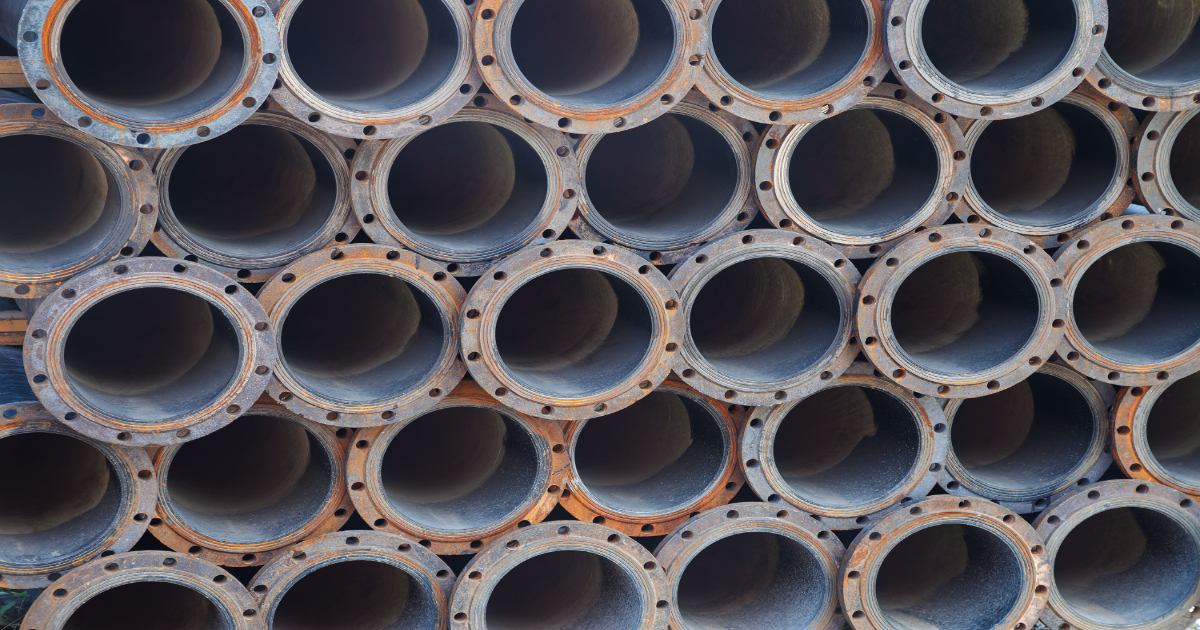
Maintenance and Care of Carbon Steel Pipes
Regular Inspections for Wear and Corrosion
Periodic inspections are a must. Over time, even the sturdiest pipes can exhibit signs of wear or succumb to corrosion, especially in environments with moisture or aggressive chemicals. Routine checks help identify these issues early, enabling timely interventions and minimizing risks of failures or leaks.
Cleaning and Preventive Measures
Maintaining the cleanliness of carbon steel pipes both internally and externally aids in prolonging their life. External surfaces can be cleaned to remove debris, dirt, or accumulated substances that might instigate corrosion. Internally, flushing the system can prevent sediment buildup and potential blockages. Protective coatings or treatments, such as rust inhibitors, can be applied to further combat corrosion. Paints or protective wraps can also act as barriers against moisture and other corrosive agents for pipes exposed to the open environment.
Replacement Guidelines
Despite best maintenance practices, there comes a point when pipes need replacement. Factors like the extent of corrosion, thickness reduction, and visible damages such as cracks can be indicators. It’s advisable to have protocols in place that outline when to replace sections of piping or entire systems. By adhering to these guidelines, potential hazards can be averted, ensuring the safety and efficiency of the piping network.
Environmental and Sustainability Concerns of Carbon Steel Pipes
The Carbon Footprint of Steel Production
Steel production, including carbon steel pipes, is energy-intensive, often relying on non-renewable sources like coal. This dependence produces substantial greenhouse gas emissions, contributing to global climate change. Blast furnaces, a conventional method for producing steel, release significant amounts of carbon dioxide. As such, the carbon footprint of steel production remains a pressing environmental concern.
Recycling and Reusability
On a brighter note, steel, including that used in carbon steel pipes, is highly recyclable. Old or discarded steel products can be melted down and repurposed into new steel items without degradation in quality. This cycle can be repeated multiple times, making steel one of the most recyclable materials on Earth. By prioritizing recycling, the demand for new raw materials is reduced, leading to fewer environmental disruptions from mining and a decrease in energy consumption.
Industry Efforts Towards Greener Production
The steel industry has proactively sought sustainable alternatives. Breakthroughs like hydrogen-based steel production are emerging, which can greatly reduce carbon emissions. Also, more energy-efficient production methods and technologies are being adopted. Efforts are underway to utilize the carbon dioxide produced during manufacturing. Such innovations and shifts in production practices showcase the industry’s commitment to aligning with global sustainability goals and reducing environmental impact.
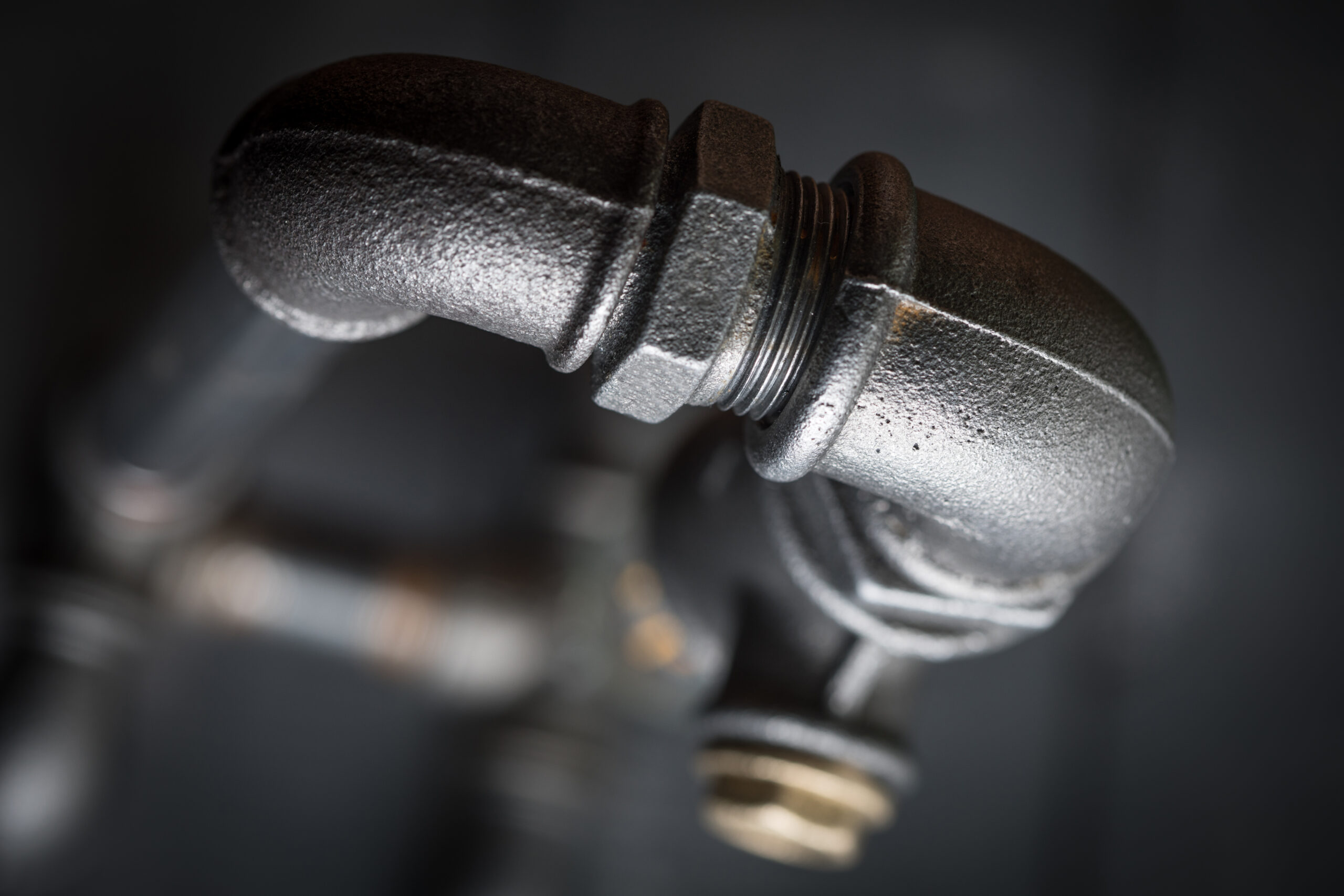
Current Trends and Innovations in Carbon Steel Pipes
Technological Advancements in Manufacturing
The steel industry has undergone a transformative phase, with many technological innovations shaping its future. Automation and digitalization, for instance, have ushered in smarter manufacturing processes. Advanced sensors and monitoring systems are now integrated into production lines, enhancing precision, efficiency, and quality control. These technologies not only streamline production but also reduce waste and energy consumption.
Research on Corrosion-Resistant Coatings
Corrosion has always been challenging for carbon steel pipes, especially in aggressive environments. Researchers have invested a lot in developing advanced coatings. For example, they are exploring nanotechnology to create coatings at the molecular level, promising unparalleled protection. Developing organic and inorganic hybrid coatings improves resistance against physical wear and chemical corrosion. These innovations aim to extend the lifespan of carbon steel pipes, reducing maintenance costs and environmental impacts.
New Applications and Uses
As industries change, so do the applications of carbon steel pipes. Carbon steel pipes find novel uses with the growth of sectors like renewable energy, especially geothermal and bioenergy. Their adaptability and strength make them suitable for emerging technologies and applications. Ongoing research into their properties also unlocks potential uses previously dominated by other materials, reinforcing their relevance in a continuously changing industrial landscape.
FAQ Section: Carbon Steel Pipes
What is Carbon Steel Made Of?
Manufacturers make carbon steel from iron and carbon. The amount of carbon can vary but typically ranges between 0.12% to 2.0%. Other elements might be present in minute amounts.
Why Do the Oil and Gas Industry Prefer Carbon Steel Pipes?
Due to their strength, durability, and cost-effectiveness, carbon steel pipes are ideal for transporting crude oil and natural gas under high pressures.
Can Carbon Steel Pipes Resist Corrosion?
While carbon steel corrodes more easily than stainless steel, you can coat or treat it with protective measures, like paint or zinc, to enhance its resistance to corrosion.
How Do You Recycle Carbon Steel Pipes?
When you no longer use carbon steel pipes, you can melt them down and repurpose them to produce new steel products. The recycling process retains the steel’s quality, making it one of the most recyclable materials available.
What Innovations Are Shaping the Future of Carbon Steel Pipe Production?
Technological advancements in manufacturing, research into corrosion-resistant coatings, and the discovery of new applications are pivotal trends in the carbon steel pipe industry.
How Often Should You Inspect Carbon Steel Pipes?
The frequency of inspection depends on the application and environment. We recommend regular wear and corrosion checks for critical applications or those exposed to harsh conditions to ensure safety and functionality.
Further Readings
Innovative Technology in Steel
